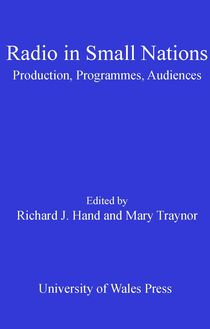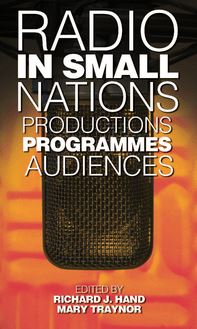-
 Univers
Univers
-
 Ebooks
Ebooks
-
 Livres audio
Livres audio
-
 Presse
Presse
-
 Podcasts
Podcasts
-
 BD
BD
-
 Documents
Documents
-
- Cours
- Révisions
- Ressources pédagogiques
- Sciences de l’éducation
- Manuels scolaires
- Langues
- Travaux de classe
- Annales de BEP
- Etudes supérieures
- Maternelle et primaire
- Fiches de lecture
- Orientation scolaire
- Méthodologie
- Corrigés de devoir
- Annales d’examens et concours
- Annales du bac
- Annales du brevet
- Rapports de stage
La lecture à portée de main
Vous pourrez modifier la taille du texte de cet ouvrage
Découvre YouScribe en t'inscrivant gratuitement
Je m'inscrisDécouvre YouScribe en t'inscrivant gratuitement
Je m'inscrisEn savoir plus
Vous pourrez modifier la taille du texte de cet ouvrage
En savoir plus

Description
Sujets
Informations
| Publié par | University of Wales Press |
| Date de parution | 15 novembre 2012 |
| Nombre de lectures | 0 |
| EAN13 | 9781783165476 |
| Langue | English |
| Poids de l'ouvrage | 1 Mo |
Informations légales : prix de location à la page 0,1074€. Cette information est donnée uniquement à titre indicatif conformément à la législation en vigueur.
Extrait
Global Media and Small Nations
RADIO IN SMALL NATIONS
RADIO IN SMALL NATIONS
PRODUCTION, PROGRAMMES, AUDIENCES
Edited by
Richard J. Hand and Mary Traynor
© The Contributors, 2012
All rights reserved. No part of this book may be reproduced in any material form (including photocopying or storing it in any medium by electronic means and whether or not transiently or incidentally to some other use of this publication) without the written permission of the copyright owner except in accordance with the provisions of the Copyright, Designs and Patents Act 1988. Applications for the copyright owner’s written permission to reproduce any part of this publication should be addressed to The University of Wales Press, 10 Columbus Walk, Brigantine Place, Cardiff CF10 4UP.
www.uwp.co.uk
British Library Cataloguing-in-Publication Data
A catalogue record for this book is available from the British Library.
ISBN 978-0-7083-2543-8
e-ISBN 978-1-78316-547-6
The right of the Contributors to be identified as authors of this work has been asserted by them in accordance with sections 77, 78 and 79 of the Copyright, Designs and Patents Act 1988.
Cover design by Dalen (Llyfrau).
General Editors’ Foreword
L et us start with the obvious question. What is the definition of a small nation? The honest answer of course is that there are many approaches to such definitions, ranging from the more obvious measures of population and geographic scale to more subtle measures such as Gross National Product or Miroslav Hroch’s notion of ‘subjection to a ruling nation for such a long period that the relation of subjection took on a structural character for both parties’ (cited in Hjort and Petrie, 2007: 6).
This series’ conceptual framework is much closer to the last of these definitions and, in some ways, chooses to take the idea further in the way that it leaves open the opportunity for volumes on different forms of media and culture to adopt subtly different approaches. In Mette Hjort and Duncan Petrie’s collection, The Cinema of Small Nations , the authors illuminate a similar debate of their own by citing a section in David Bordwell and Kristin Thompson’s definitive Film History: An Introduction entitled ‘Smaller producing countries’. This included work on the cinemas of Mexico, India, Colombia, New Zealand, Australia and Canada (2007: 3). Here is not the place to debate the validity of this specific list, but it illustrates the problem as well as the useful and interesting challenge of considering the concept of small nationhood in different ways.
Fundamentally, the series is most interested in the nation as a key site of power and, in turn, how artists and policy makers negotiate the question of power in different kinds of national contexts. Therefore, if Hroch’s definition above is slightly too rigid for this purpose it nevertheless indicates the general terrain on which this series operates. It attempts to give contributors the opportunity to write about national contexts within which particular art forms have had to negotiate significant questions of power relations with close neighbours at key points in recent history.
The form that such ‘negotiations’ have taken obviously varies. For example, very close to home, here in the United Kingdom, the issue of language has been a powerful factor in the relationship between Wales and England in particular. The same is true to a greater or lesser extent within other European countries such as Spain and Belgium.
By contrast, in the context of ‘First Nations’, which we have taken the decision to include in this series, language is frequently just one dimension of a long history of much broader struggles characterized most pressingly by various forms of material inequalities and fundamental disputes over land and ownership.
At this point it is very important to state that this series is not concerned solely with the disadvantages of small national contexts. If anything the balance is somewhat in the other direction, though there is no question that many contributions will analyse the challenges of the kinds of power relationships outlined above. However, one of the first inspirations for the editors’ involvement both in the series and in the study of small nations in general was the idea of the advantages of small national contexts, particularly for certain kinds of creative endeavour. Hjort and Petrie quote Olaffson from a work that was one of the first to make a significant intervention in this direction: ‘the citizen of a small state has a better possibility to influence decision making than a citizen in a large state’ (2007: 7). For the socially and politically engaged artist or cultural thinker this offers the most potent of opportunities and is one of the key reasons why the contributions to this series have the potential to offer such important insights.
At the time of writing, the volume of academic work on the media and culture of small nations is relatively slight. We have already mentioned Hjort and Petrie’s collection on cinema, and the bibliographies of all the collections in this series will attest to a number of outstanding smaller-scale insights in different disciplines. The aim of the Small Nations and Global Media series is to bring some of that work together in a single recognizable source that hopes to make a significant contribution not only to debates specifically on creative endeavour and small nations, but by extension to the relationship between the idea of the ‘national’ and the media and culture that is produced in different kinds of national contexts.
Steve Blandford
and Gill Allard
Contents
General Editors’ Foreword
About the Contributors
Radio in Small Nations: An Introduction
Richard J. Hand and Mary Traynor
1 In Search of Access, Localness and Sustainability: Radio in Post-devolutionary Wales
Steve Johnson and Philip Mitchell
2 Voice of a Nation: The Development of Radio and Ireland
Rosemary Day
3 We Don’t Talk Any More: The Strange Case of Scottish Broadcasting Devolution Policy and Radio Silence
Ken Garner
4 New Zealand – A Radio Paradise?
Brian Pauling
5 Radio as an Expression of Nation and Sub‑nation in Laos
Mary Traynor
6 Training for Life: The Contribution of Radio Training to Indigenous Education and Well-being in Australia
Ioana Suciu and Kitty van Vuuren
7 CHOU Arabic Radio in Montreal: Finding Unity in Diversity
Martin LoMonaco
8 Regional Radio and Community: John Lair and the Renfro Valley Barn Dance
Jacob J. Podber
9 Community Radio for the Czech Republic – Who Cares?
Henry G. Loeser
10 Radio in the Republic of Moldova: The Struggle for Public Service Broadcasting
James Stewart
11 Radio in Wales: The Practitioner Speaks
Julie Kissick and Mary Traynor
Works Cited
Interviews
About the Contributors
Rosemary Day is the director of the Radio Research Centre based in Mary Immaculate College, University of Limerick where she is a seniorlecturer and head of the department of media and communication studies. She has published extensively on community radio in Ireland.
Ken Garner is senior lecturer in media and journalism at Glasgow Caledonian University, and associate editor of The Radio Journal: International Studies in Broadcast and Audio Media , a journal for which he was founding editor in 2003. From 1997–2002 he was radio critic of the Sunday Express .
Richard J. Hand is professor of theatre and media drama at the University of Glamorgan. He is the author of Terror on the Air! Horror Radio in America, 1931–52 (Jefferson, NC: McFarland, 2006) and the co-author, with Mary Traynor, of The Radio Drama Handbook (New York: Continuum, 2011). In addition to radio studies, his research interests include adaptation/translationstudies and horror studies.
Steve Johnson joined the University of Glamorgan as community radio tutor in 2001, following a successful career in commercial radio. Steve was heavily involved in the launch of GTFM Radio, the first community radio station in Wales, and has taken an active role in supporting the development of community radio in Wales ever since.
Julie Kissick is senior lecturer in media, communications and journalism at the University of Glamorgan. A Sony award-winning journalist, Julie was ITV’s first female producer of the weekly football programme Soccer Sunday . She has held broadcast management roles both at ITV and the BBC. Her research interests include the narrative of cancer; how compliance has influenced output at the BBC and the impact of social media on ‘traditional’ broadcasting.
Henry G. Loeser is a teaching member of the faculty of social studies – Department of Media Studies and Journalism in Brno, Czech Republic. In 2008, he founded the Media Innovation Centre at Masaryk University, establishing the new university broadcast operations. Since 2003, he has been founder and director of Radio Expert, an NGO that is active in community media projects worldwide.
Philip Mitchell is based at the University of Glamorgan’s Cardiff School of Creative and Cultural Industries, where he is one of the heads of academic programmes. He also teaches and researches in the school’s division of media, culture and journalism. His current research interests focus on journalism, broadcasting and film in Western Europe and in Wales.
Martin LoMonaco is professor of communication and media arts at Neumann University in suburban Philadelphia. He was co-founder of the Journal of Radio Studies (now the Journal of Radio and Audio Media ) along with Frank Chorba, and served as that journal’s managing editor for five years.
Brian Pauling is a principal lecturer at the New Zealand Broadcasting School. He founded the New Zealand Broadcasting School at Christchurch Polytechnic Institute of Technology in 1983 and was the first head of school. He has had a fifty-year career in broadcasting, publishing and tertiary education.
Jacob J. Podber is assoc
-
 Univers
Univers
-
 Ebooks
Ebooks
-
 Livres audio
Livres audio
-
 Presse
Presse
-
 Podcasts
Podcasts
-
 BD
BD
-
 Documents
Documents
-
Jeunesse
-
Littérature
-
Ressources professionnelles
-
Santé et bien-être
-
Savoirs
-
Education
-
Loisirs et hobbies
-
Art, musique et cinéma
-
Actualité et débat de société
-
Jeunesse
-
Littérature
-
Ressources professionnelles
-
Santé et bien-être
-
Savoirs
-
Education
-
Loisirs et hobbies
-
Art, musique et cinéma
-
Actualité et débat de société
-
Actualités
-
Lifestyle
-
Presse jeunesse
-
Presse professionnelle
-
Pratique
-
Presse sportive
-
Presse internationale
-
Culture & Médias
-
Action et Aventures
-
Science-fiction et Fantasy
-
Société
-
Jeunesse
-
Littérature
-
Ressources professionnelles
-
Santé et bien-être
-
Savoirs
-
Education
-
Loisirs et hobbies
-
Art, musique et cinéma
-
Actualité et débat de société
- Cours
- Révisions
- Ressources pédagogiques
- Sciences de l’éducation
- Manuels scolaires
- Langues
- Travaux de classe
- Annales de BEP
- Etudes supérieures
- Maternelle et primaire
- Fiches de lecture
- Orientation scolaire
- Méthodologie
- Corrigés de devoir
- Annales d’examens et concours
- Annales du bac
- Annales du brevet
- Rapports de stage







